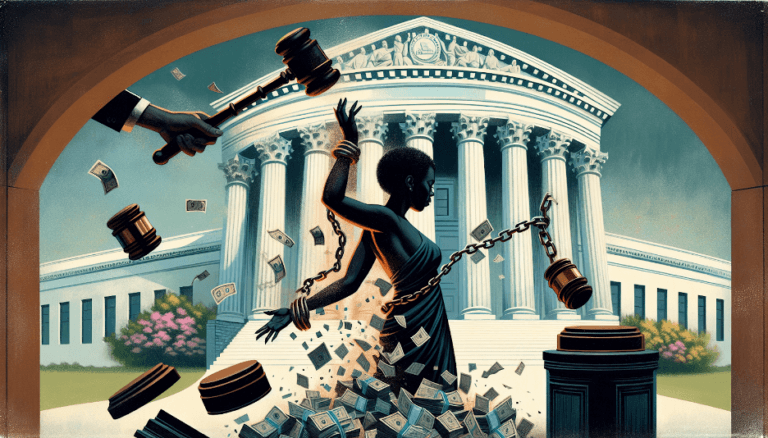What Happens to My Retirement When I Die?
If you are like most Americans, by the time you approach or reach retirement age, your two biggest assets are your home and your retirement account. If you are in the process of creating an estate plan, or are beginning to think about it, you may be asking yourself, “what happens to my retirement when I die?” Good question and, as with most questions posed on this site, the answer is “it depends.”
Traditional Pension Plans (Defined Benefit Plans)
If you receive a defined benefit plan through your employer, union or an annuity company (what’s typically called a pension) then your retirement payments will begin under the terms set out by your employer, union or the annuity company. The retirement payments will generally stop upon your death. A portion of your payments may continue to go to a surviving spouse, depending on your plan or elections you made under it.
IRAs and 401(k)s
If, like many people, you do not have a traditional pension, but instead have an employee sponsored 401(k) (or 403(b) if you are an educator or work in the non-profit world), or if you have saved for your own retirement through an Individual Retirement Account (IRA), you can begin taking penalty free withdraws for your retirement beginning when you reach age 59½. Under new federal laws (more fully described below), starting January 1, 2020 you must begin withdrawing funds from your 401(k), 403(b) or IRA when you reach 72 years of age. This is known as required minimum distributions (or RMD for short). Note: if you turned 70½ prior to January 1, 2020 your RMD is based on age 70½, not age 72.
What happens to your retirement after you die is a little more complex if your retirement funds are in an IRA or 401(k). Generally, the funds in the IRA or 401(k) will go to the person or persons you have listed as your beneficiary with the financial institution or plan administrator. If you have no beneficiary listed, or if your beneficiary dies before you, then the funds in the account will go to your estate and, after probate, will pass to your heirs or to the beneficiaries listed in your Will.
Tax Consequences for IRAs and 401(k)s
Okay, so who gets your retirement after you die is simple enough – the person or persons you list on your beneficiary forms (be sure to update your beneficiary – if your beneficiary dies before you and you don’t provide a new one, then the funds in your retirement account go to your estate and must be probated). The confusion usually comes with how the funds are received. Remember the advantage of a traditional IRA and a 401(k) is that taxes on funds put into the accounts are deferred. Note: taxes are deferred NOT done away with. When you retire and begin withdrawing funds from an IRA or 401(k) the funds that you withdraw are taxed at that time. The same is true for your beneficiaries. They are taxed on your IRA or 401(k) funds when the funds are withdrawn from the accounts and passed to your beneficiaries (exception – a surviving spouse can roll over the deceased spouse’s plan into his or her own retirement account to continue the tax deferment).
Funds withdrawn from IRAs and 401(k)s are treated and taxed as income. As with any income, the amount received in any given year determines your tax bracket and thus, the amount of taxes you have to pay. It is therefore beneficial (from a tax standpoint) to stretch out the withdrawals from an IRA or 401(k) over as many years as possible. However, the rules on how long distributions from an IRA or 401(k) were greatly changed starting in 2020.
No More Stretch? The SECURE Act Changes Retirement Laws
The Setting Every Community Up for Retirement Enhancement (SECURE) Act of late 2019 makes some major changes in how 401(k) and IRA accounts can be distributed upon someone’s death. The SECURE Act, which took effect January 1, 2020, puts restrictions on who can “stretch” out the withdrawal period for an inherited 401(k) or IRA. Under the new rules some beneficiaries must now withdraw all funds in an inherited retirement account within ten-years of the original account owner’s death.
A Little Background on 401(k) and IRA Withdrawal Rules
Traditionally, money left in your 401(k) or IRA account after you die could be paid out to your beneficiaries over a period of many years. This allowed your beneficiaries to have a steady stream of income over their life-time (assuming the funds were available in your retirement account) and greatly lessened the tax burden of the withdrawals. This was known in estate planning and financial planning circles as a “stretch” because the beneficiaries were able to stretch out the withdrawal of funds from the account over many years. Beginning the first of 2020, Congress changed the rules.
New Rules Under the SECURE Act
The SECURE Act, in an effort to increase revenue (i.e. taxes), now requires certain beneficiaries of a 401(k) plan or IRA to withdraw all of the funds in the retirement account within ten years of the original account holder’s death. The new law does away with the Required Minimum Distribution (RMD) (https://www.irs.gov/retirement-plans/retirement-plans-faqs-regarding-required-minimum-distributions) rules for these beneficiaries. This means that no minimum amount has to be withdrawn from the inherited retirement account each year during the ten-year period. However, all of the money in the account has to be withdrawn after ten-years. If the inherited account is large, this could result in a large tax burden on the beneficiaries of the account.
Who is Affected by the SECURE Act?
The good news is that the new withdrawal rules of the SECURE Act do not affect all beneficiaries. The new ten-year withdrawal requirement does not apply to: (1) the original account holder’s surviving spouse; (2) a disabled beneficiary; (3) a chronically ill beneficiary; and (4) a beneficiary who is not more than ten-years younger than the original account holder. Also, if the 401(k) or IRA account holder dies leaving minor children as beneficiaries, the ten-year withdrawal period does not begin for those children until they become adults.
What is the Impact of the SECURE Act on Special Needs Trusts?
The impact of the new SECURE Act withdrawal provisions are likely to be minimal on Special Needs Trusts. The disabled beneficiary of the Special Needs Trust should still be able to enjoy the benefit of stretching out inherited 401(k) and IRA withdrawals over their lifetime. Provisions in the SNT that provide for remainder beneficiaries may need to be reviewed and amended. Be sure to look back at this blog, as I will continue to provide updates as the new law develops and it becomes clearer how it will impact Special Needs Trusts.
What About Other Trusts?
A trust can be listed as a beneficiary to your IRA or 401(k). However, the trust must follow the same withdrawal rules as individuals. If the persons who benefit from the trust are not an exempted class, then the trust will have to receive all of the distributions from your IRA or 401(k) within ten years. Traditionally, it was common to list a trust a beneficiary for estate planning purposes, to protect heirs from creditors and to make sure the money from your retirement accounts were spent by heirs per your wishes. If you have designated a trust as the beneficiary of your retirement accounts, it may be time to review that trust and to make some changes due to the new rules. Even though your trust may need to be updated, there may still be options to ensure that your estate plan is carried out per your wishes and to minimize tax consequences for your heirs.
No Beneficiary
Remember that if you list no beneficiary on your retirement account (or your named beneficiary dies before you) then the funds in your IRA or 401(k) will have to go through probate before they can be distributed. Although probate is not as complicated today as it once was, it still can be time consuming and costly. Further, if you do not have beneficiaries listed on your retirement account, the funds may not end up going where you wish them to.
The Take Away
Your take away should be that if you are planning on using your 401(k) or IRA as a long-term estate planning strategy for leaving a life-time source of income for young family members, such as grandchildren, under the new SECURE Act the rules have changed and it may be time to review and update your estate plan. If you would like to schedule a time to speak with our firm about your estate plan or other legal needs you can do so by calling us at (501) 891-6000 or booking an appointment here https://whlawoffices.com/contact-us/





